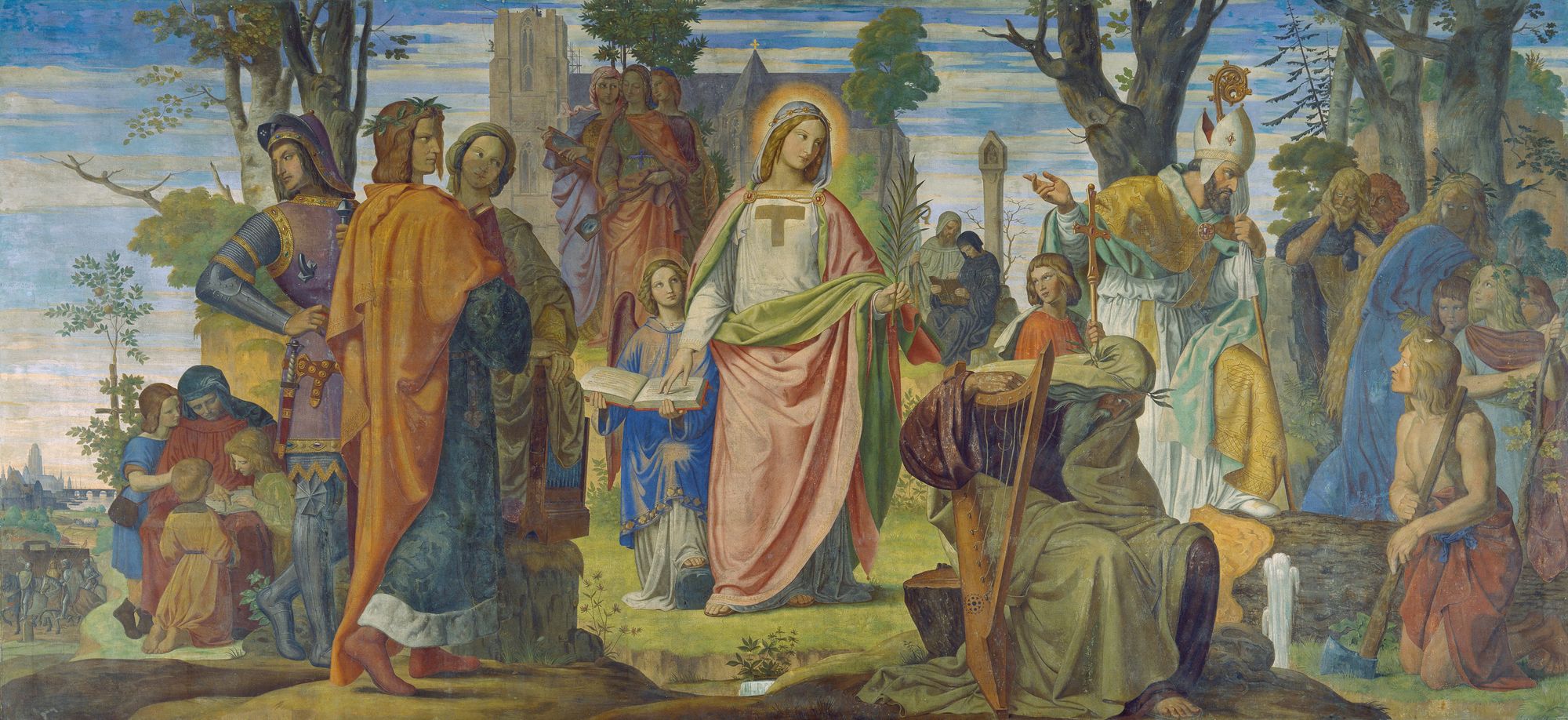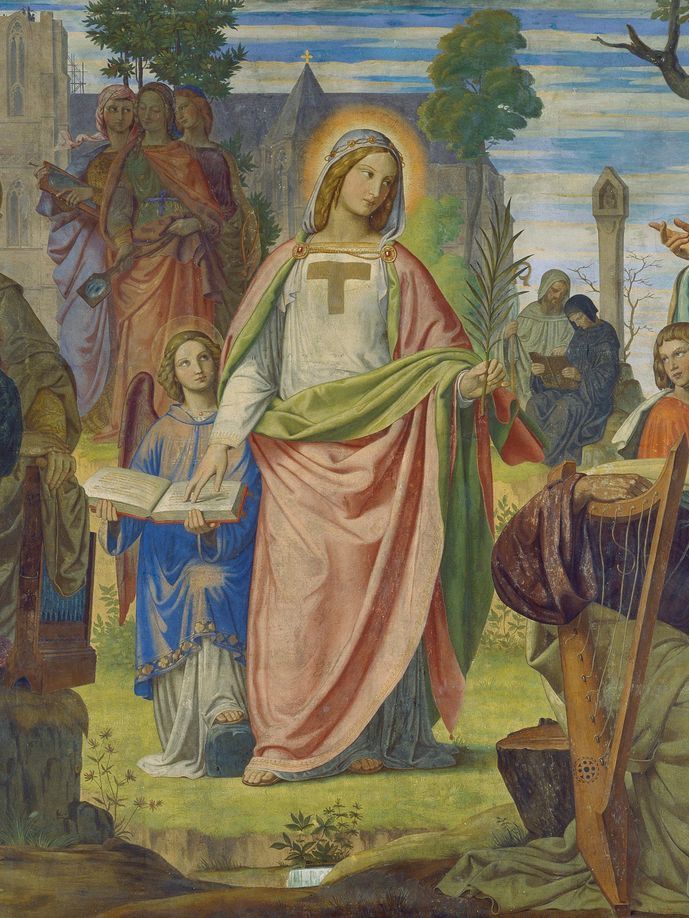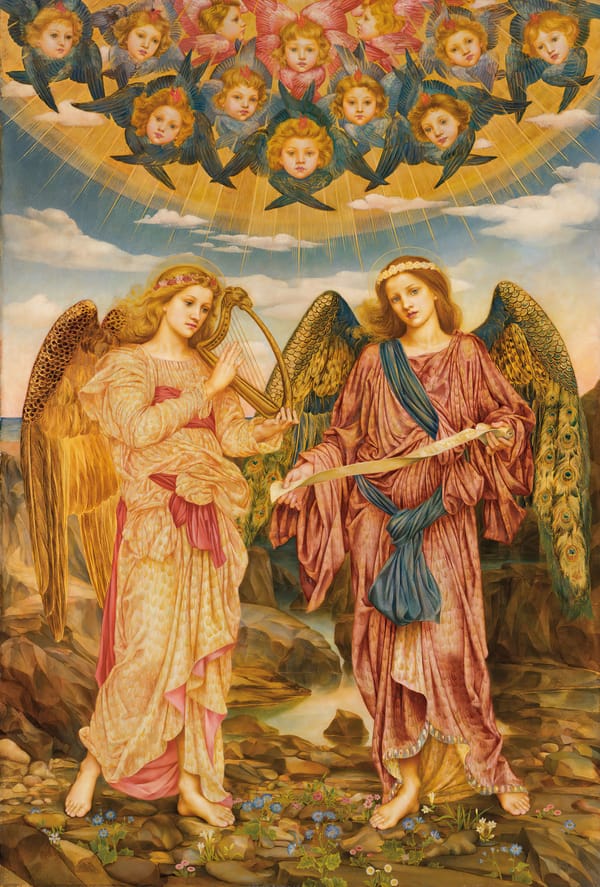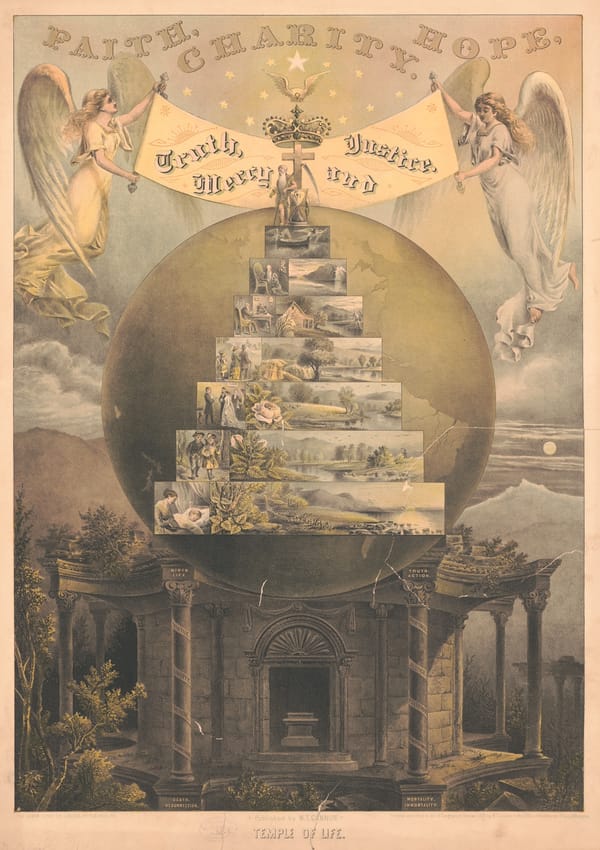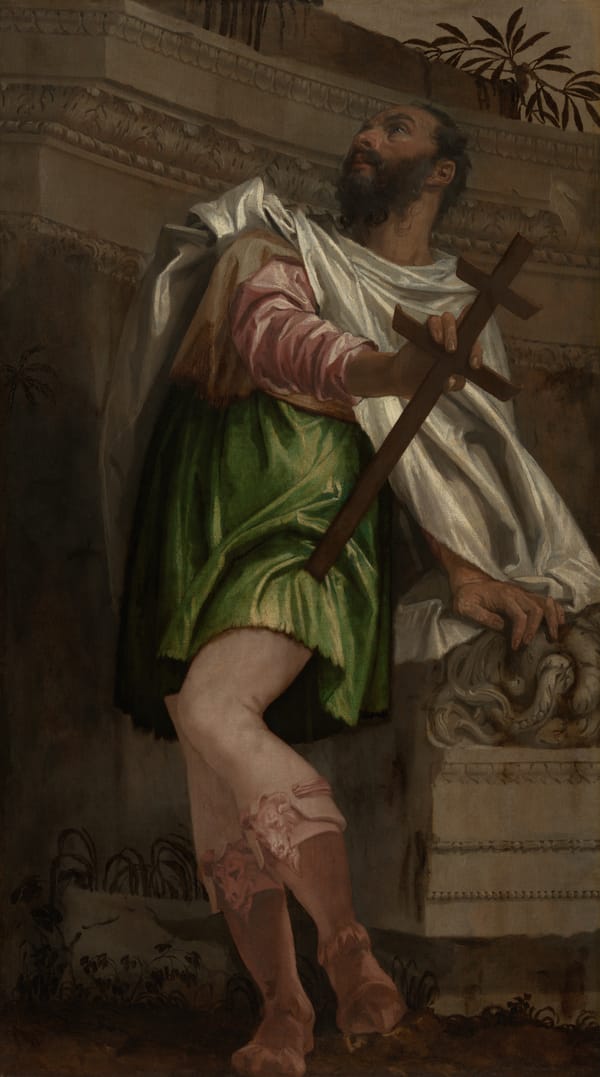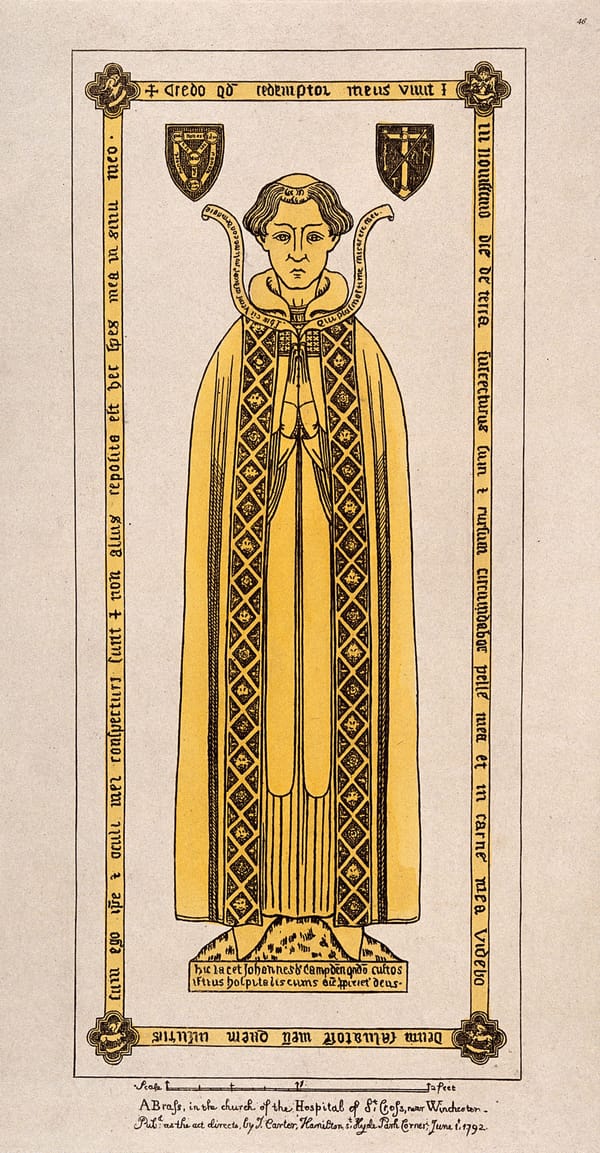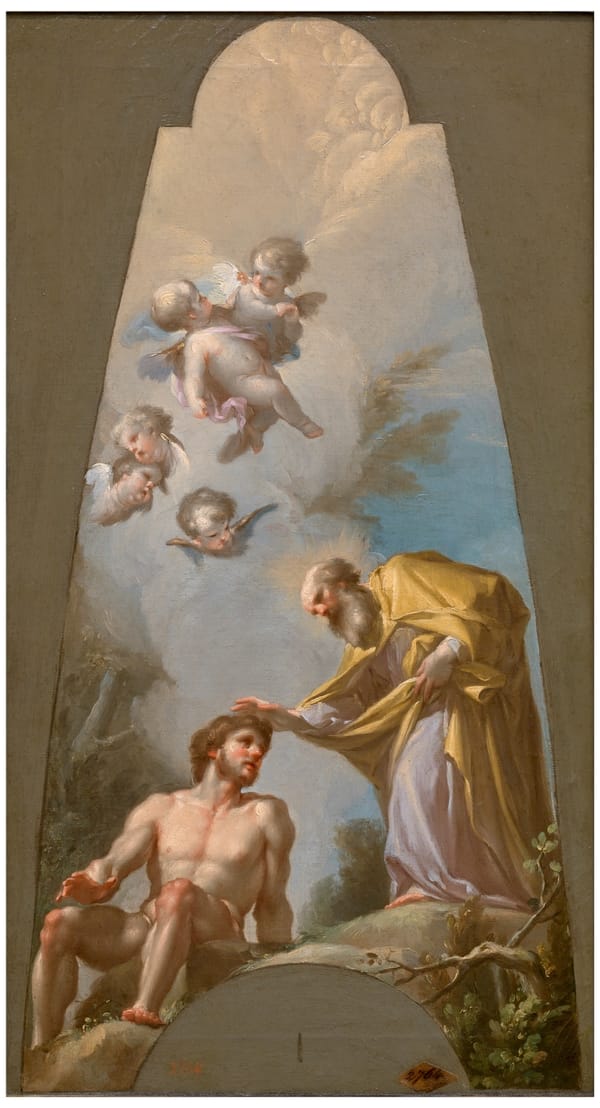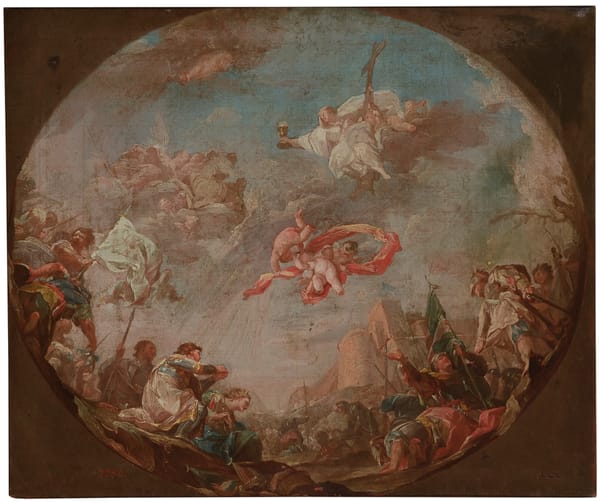About the Image:
In the view of the Nazarene Philipp Veit, who was appointed director of the Städelsches Kunstinstitut in Frankfurt in 1830, the art of the future should be based entirely on the Christian Middle Ages. His fresco, which was transferred to canvas, shows an allegorical representation of the arts in the spirit of Christianity. Religion is represented by the pious female figure in the middle of the picture. With reference to the Bible, she breathes life into the three sister arts Painting, Sculpture and Architecture in the background and into Poetry, Music and Chivalry in the foreground on the left. The figures on the right edge of the picture observe the scene reverently as they wait to be converted by the sermon of St Boniface. An aged bard, symbolising the heathen cult, is bending low over his harp at front right. His position in the shadows and the broken strings of his instrument show that the end of his era has come. The fresco originally adorned the old premises of the Institute in Neue Mainzer Straße. There, too, the centre panel of the three-part work accompanied the allegories Germania and Italia. They represent the long-standing unity of the peoples of Germany and Italy.
The Arts Being Introduced to Germany by Christianity - Digital Collection
